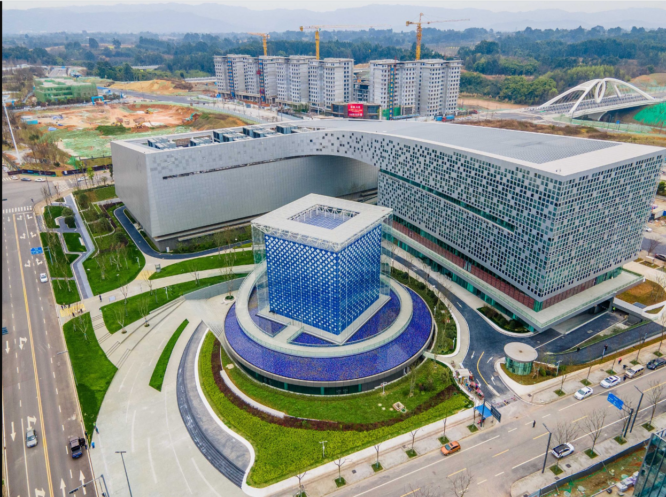Every day brings frightening news about the Chinese government’s use of technology, whether it’s Huawei creating 5G infrastructure or the EU and US barring TikTok from official phones.
Technology and China debates in the US generally pit democracy against dictatorship. According to this argument, a US technical success is not only self-interested—it is essential to safeguarding rights and freedoms worldwide. Unfortunately, reality is more difficult. This narrative is incorrect, simplistic, and hazardous for human rights worldwide.
First, the obvious: Chinese human rights are appalling. Human Rights Watch, along with partner groups and investigative journalists, has shown how technology—whether mass surveillance, policing technology, or tight censorship and control of domestic social media companies—maintains the Chinese Communist Party’s power (Human Rights Watch, n.d.).
In Xinjiang, the authorities use mobile apps, biometric collection, artificial intelligence, and big data to arbitrarily detain and imprison the region’s 13 million Uyghurs and Turkic Muslims (Wang 2019).

But tech-facilitated surveillance in China typically ignores the role Western police philosophies and technology corporations have played—and continue to play—in motivating their Chinese equivalents.
Influences
The UK’s “intelligence-led policing” and tech-enabled surveillance inspired China’s move toward more intrusive “intelligence-led policing” and surveillance (Schwarck 2018). The abusive US “War on Terror” has allowed the Chinese government to frame its Uyghur persecution as part of a “global war on terror” (Taylor and Epstein 2022).
Chinese monitoring and policing technology businesses are keen to emulate US practices: Landasoft, a Xinjiang police supplier, openly states (Yan and Wang 2015) that it wants to become the “Palantir of China” (St. Vincent 2018), referring to the controversial US company that provides intrusive profiling and analytic capabilities to law enforcement and intelligence agencies worldwide (Brigida 2023).
Global surveillance uses similar tools. In many nations, AI is being used to monitor protests, “predict” crimes, and profile oppressed groups, threatening our human rights. Police worldwide employ CCTV cameras and face-recognition technologies.
The assumption that a US-China technical battle is between democracy and authoritarianism also understates—and risks glossing over—some of the most egregious and systemic rights violations that technology is enabling in the US.
After former National Security Agency contractor Edward Snowden revealed the scope and invasiveness of some US government surveillance systems in 2013, it took seven years for core bulk data collection powers to expire while other mass surveillance programs continued unchecked (Wong 2014). US mass surveillance and bulk data collection have damaged media freedom, the public’s right to know, legal advice, and the capacity to hold the government accountable (Human Rights Watch 2015).
Meanwhile, billions of people worldwide use Big Tech—Amazon, Apple, Facebook, and Google—to exercise their human rights. The concentration of power in these firms has harmed many individuals, both inside and beyond the US, by spreading hate speech, election-related disinformation, and ethnic cleansing.

Surveillance capitalism
The surveillance-based business model of Facebook and Google harms human rights by selling data and converting it into ad money. Their algorithms optimize “user engagement”—clicks, likes, and shares. Divisive and spectacular material engages more (Vosoughi, Roy, and Aral 2018) (Horowitz and Seetharaman 2020).
Big Tech owns a disproportionate quantity of data, yet its commercial exploitation of personal data puts everyone—from activists to politicians—at risk of blackmail. Amnesty International found in 2017 that $138,380 could buy data on 1,845,071 US Muslims.
The growing digitalization of basic government tasks, from police to delivering critical public services, makes it harder for independent regulators, journalists, and civil society to expose and fight rights breaches. Due to a combination of factors—including governments not revealing the use of surveillance and automation technologies and systems being opaque and difficult to understand—there is frequently no recourse for injustice or abuse. Rights breaches are typically invisible to everyone—even the targeted, excluded, or discriminated against—making them hard to fight.
China and the US have functioned in quite different legal and political circumstances, not in how they employ and misuse certain technology.
The Chinese Communist Party controls the law, courts, police, prosecutors, and media. Given its role in maintaining the Party’s rule, its police and policing surveillance systems have practically unlimited capabilities to observe and control the populace. China pressures, censors, and monitors all private firms. China lacks the rule of law and a free press, making it impossible to collect information from these corporations or hold them accountable for wrongdoing.
However, the US has a vast network of law enforcement and government entities that have perpetrated major human rights violations. However, courts, elected officials, a free press, public opinion, and an active civil society oversee them. Due to privacy laws, US agencies’ surveillance powers are more decentralized than China’s.
US democracy and rights are at stake. For instance, broad definitions of “rioting” and harsher punishments are criminalizing civic involvement and the freedom to protest (Pedneault 2021). From the FBI’s surveillance and harassment of Martin Luther King Jr. to the NYPD Intelligence Division’s religious profiling and surveillance of Muslims in NYC and beyond, problematic surveillance has a long history.
The US federal, state, and municipal governments’ surveillance capabilities and declining democratic protections can create a cycle. This cycle can hasten the erosion of democratic values and systems that prevent totalitarianism.
People everywhere—including in China and the US—live in a digital environment where monitoring is widespread and accountability for rights abuses is harder. The future of technology is not a conflict between democratic and authoritarian nations. It’s a fight against technology’s global rights violations. Technology development must protect and defend human rights.

Some remedies are simple and overdue. Technology must be used more aggressively by the US to safeguard human rights at home and abroad.
Possible answers
There is no one solution to this human rights crisis, but there are critical measures.
First, the US should address the uncontrolled corporate dominance and monopolistic practices of leading digital corporations and make it simpler for individuals and governments to hold platforms responsible while fostering alternative models.
Second, to guarantee privacy in a digital environment, the US should tighten data use restrictions. Urgently, the US needs a comprehensive federal data protection law to oversee personal data collection, analysis, and sharing.
In the US, corporate interests have often superseded human rights, making these improvements difficult. Data protection rules have been resisted by a major portion of the US IT industry. They argue that strict laws will impede innovation.
Ironically, the Chinese government may help establish policy measures to control enterprises.
Since 2016, the Chinese government has approved a number of data-related laws, including a Personal Information Protection Law that controls private enterprises’ data collection, use, and storage. Beijing claims that a digital industry regulated by regulations is necessary to build consumer trust and a “healthy” data-driven economy (NPC Observer, n.d.).
The Chinese government appears to feel that controlling private firms’ personal data management promotes innovation. The EU’s General Data Protection Regulation inspired the Personal Information Protection Law. (Though China’s absence of rule of law makes the Personal Information Protection Law’s execution more problematic.)
Third, the US should regulate artificial intelligence deployments that violate human rights and guarantee that AI is utilized safely, legally, and without discrimination. Facial recognition allows governments to identify and monitor people’s identities and behaviors, hence law enforcement should not utilize it (NIST 2019). Facial recognition algorithms may potentially promote biased policing.
Fourth, the US should halt national security-related rights abuses and provide redress for decades of mistreatment. To eliminate mass data collection, Congress should remove Section 702 of the Foreign Intelligence Surveillance Act (Human Rights Watch 2017).
Finally, the US should go beyond restraining the greatest abuses. The US government should fund bolder ideas like democratically beneficial technical systems. The American nonprofit New_Public has urged governments to create “digital public spaces”—publicly owned online spaces that maximize public goods and allow people to “talk, share, and relate without those relationships being distorted and shaped by profit-seeking incentive structures” (New_Public, n.d.).
The future
Other countries have proven how innovative technology use may improve democracy. Taiwan’s government is working with “g0v” (pronounced “gov zero”) civic hackers to implement participatory decision-making. (g0v collective member Audrey Tang eventually became the country’s digital minister, a good indicator.) As demonstrated in other nations, US jurisdictions don’t need the federal government to lead. Another municipal participatory democracy project is Barcelona’s Decidim.
The bottom line: As the US races to create technology to compete with China, it must set human rights standards or risk losing by winning. All governments worldwide are scrambling to deploy and control technology and IT businesses.
Human rights must be prioritized in new laws and policies in a short time. Regulation and participatory innovation are essential to guarantee that our future technology infrastructure does not include built-in rights abuses that accelerate a retreat from democratic protections and democracy itself. High stakes.

